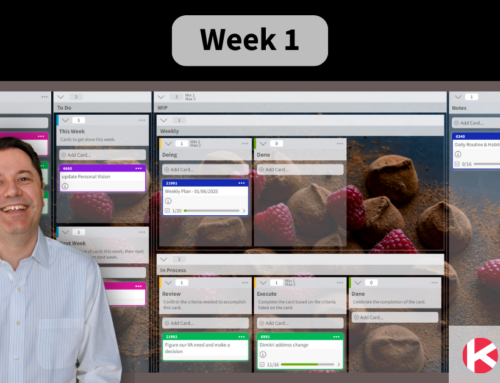
As a project manager, you’re always looking for ways to increase team productivity. One way to do this is by using Kanban. Kanban is a lean manufacturing method that helps teams visualize their work, identify bottlenecks, and optimize their process. In this article, the Cheap Paper Writing service team will share their knowledge on how you can implement Kanban for team productivity and for a more efficient workflow.
First, let’s take a look at what Kanban is and how it can help your team.
What is Kanban?
Kanban is a visual system for managing work. It was originally developed by Taiichi Ohno, an industrial engineer at Toyota, as a way to increase manufacturing efficiency.
The word “Kanban” means “signal card” in Japanese. In a Kanban system, work is represented by cards that are moved through a series of columns on a board. This visual representation helps teams see the flow of work and identify process bottlenecks.
Why use Kanban for Team Productivity?
The key principle of Kanban is to limit work in progress (WIP). This means that team members should only work on a few tasks at a time, and those tasks should be well-defined. By limiting WIP, teams can avoid overloading themselves with work and can focus on completing tasks more quickly.
There are many reasons why you might want to use Kanban for team productivity enhancement. Here are a few of the most common benefits:
Visibility
One of the biggest benefits of Kanban for team productivity is that it provides visibility into the work. This can help teams identify bottlenecks and optimize their process.
Flexibility
Kanban is a flexible system that can be adapted to the needs of any team.
Improved collaboration
Kanban can help improve collaboration by providing a shared understanding of the work.
Improved quality
Kanban can help teams deliver higher quality products by giving them visibility into the work and allowing them to identify and fix defects early. It helps team members prioritize work to ensure that the most important tasks are always completed first.
How Kanban works
A Kanban system consists of three main parts: a board, cards, and columns.
- The board is where all of the work takes place. It’s a visual representation of the work that needs to be done.
- Cards are used to represent individual pieces of work. They can be used to track anything from tasks to features.
- Columns are used to organize the cards on the board. Typically, Kanban boards have three columns: To Do, In Progress, and Done. However, you can customize the columns to fit the needs of your team.
How to implement Kanban for Team Productivity
Now that you know what Kanban is and how it can help your team, it’s time to learn how to implement it. Here are some tips:
- Define your process. Decide which steps your work will go through from start to finish. This will help you create your Kanban board later on.
- Choose a Kanban tool. There are many options available, both free and paid. Once you’ve chosen a tool, set up your Kanban board by adding columns for each step of your process.
- Add tasks to your board. As work comes in, add it to your board in the appropriate column. Make sure to assign it to a specific team member so they know it’s their responsibility.
- Set up task limits. This will help prevent your team from getting overwhelmed with work. Decide how many tasks can be in each column at one time and stick to that limit.
- Use Kanban metrics. Tracking progress is important in any project, and Kanban is no different. Keep an eye on metrics like cycle time and throughput to make sure your process is efficient.
Kanban can be adapted to any process. However, there are a few best practices that you should keep in mind:
- Limit work in progress. One of the main goals of Kanban is to reduce the amount of work in progress. This helps teams focus on completing items and prevents them from starting too many things at once.
- Visualize the work. The Kanban board is a visual representation of the work. This helps teams see what needs to be done and identify bottlenecks.
- Continuously improve. Kanban is designed to be an iterative process. As you use it, you’ll learn what works well and what doesn’t. Make sure to constantly review and adjust your Kanban for team productivity so that you can get the most out of it.
Choosing the best Kanban tool for your team
Now that you know the basics of Kanban, it’s time to choose the right tool for your team. There are a lot of great Kanban tools out there, so it can be tough to decide which one is right for you. Here are a few things to consider when making your decision:
- Number of users. If you have a large team, you’ll want a tool that can accommodate everyone.
- Ease of use. The best Kanban tool is one that’s easy to use and understand. It should have a clean interface that’s not overly complicated.
- Feature set. Make sure the Kanban tool you choose has all the features you need. For example, if you want to be able to track progress over time, look for a tool that offers burndown charts.
- Pricing. Kanban tools range in price from free to enterprise-level. Choose the one that fits your budget and needs.
Troubleshooting your Kanban implementation
If you’re having trouble implementing Kanban for team productivity, there are a few things you can do to troubleshoot the process.
First, make sure that everyone on the team is on board with the change. Introducing Kanban for team productivity improvement can be a big shift for some organizations, and it’s important that everyone is committed to making it work. If there are team members who are resistant to the change, try to identify the root of their resistance and address it head-on.
Second, take a look at your Kanban board and make sure that it is set up in a way that makes sense for your team. There is no one right way to set up a Kanban board, so it’s important that you find a system that works for your team. If your Kanban board is too complicated, it will be difficult for team members to use it effectively.
Finally, make sure that you are using Kanban in a way that fits with your organization’s culture and values. If you try to force Kanban into an organization that isn’t ready for it, you’re likely to encounter resistance. Instead, try to promote Kanban as a way to improve the way your organization works. By doing this, you’ll be more likely to get buy-in from team members and senior management.
This was a guest blog. Please review our guest blog disclaimer.
Learn to Work Smarter, Not Harder!
Get our top articles weekly.
Table Of Contents
Discover many more posts…







